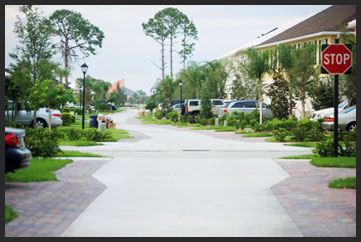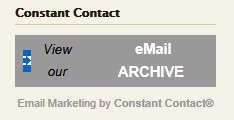|
September 2015
Welcome to this month's edition of the McManamy McLeod Heller, LLC monthly newsletter. Each month we share important information for the serious real estate professional. You can rely on MMH to update you on current changes in real estate law that will impact your business and to offer you practical ideas on how to provide your clients with the best customer service in town.
This month's topic shares what you need to know to resolve issues involving alleys and driveways.
RESOLVING ISSUES INVOLVING
ALLEYS AND DRIVEWAYS

1) Abandoned Alleys: There is an old abandoned alley or street abutting the property. Who owns the abandoned property?
- Over long periods of time, adjoining owners have used the abandoned property as their own.
- The abandoned alley or street belongs to the municipality. However, in most instances, upon request, the municipality will divide the abandoned alley in half and deed to the adjoining property owners.
2) Easements: A neighbor has built his driveway over your property. What should you do? - You can ask the neighbor to remove the driveway.
- Depending upon how long the driveway has been there, a prescriptive easement may have been created.
- You can sell (or give) them an express easement, which defines the rights given (such as duration, assignment rights and maintenance).
- You can sell (or give) them the piece of property over which the drive passes.
3) Joint Driveways: A driveway runs up the property line and services both adjoining owners. What are each owners rights? - If a Joint Driveway agreement does not exist, the respective parties' rights may be difficult to determine.
- If no agreement exists, then the two neighbors should come to an agreement as to use, parking rights and maintenance. The agreement should be recorded.
4) Boundary Line Agreements: A neighbor builds a fence over the property line. Can the owner whose property that the fence encroaches upon lose property rights to land owned on the wrong side of the fence? - When there is a fence that is built over a property line, the adjoining property owner has exerted control over land that is not his and could eventually claim rights to the property by adverse possession.
- The rightful owner can either demand that the fence be removed, or
- If the rightful owner likes the fence or otherwise consents, rather than having the fence removed, the parties can enter into a boundary line agreement that sets out on the record that the fence is allowed to remain but that the rightful owner and the neighbor agree that the use is consensual and not adverse and that no rights to the property are being relinquished by the rightful owner.
 Have You Visited Our eNewsletter Archive?
 Missed a past eNewsletter or want to review a past article? McManamy McLeod Heller archives all of our past eNewsletters on our website at www.mmhfirm.com. Visit the site and click on the "View Our eMail Archive" button. Missed a past eNewsletter or want to review a past article? McManamy McLeod Heller archives all of our past eNewsletters on our website at www.mmhfirm.com. Visit the site and click on the "View Our eMail Archive" button.
MMH Has 3 Locations to Serve Your Needs
Buckhead Location:
3520 Piedmont Road NE, Suite 110
Atlanta, Georgia 30305
Phone: 404-442-6600
Fax: 770-351-0940
Midtown Location:
621 North Ave NE Suite C100
Atlanta, Georgia 30308
Phone: 404-502-3334
Fax: 1-866-898-1099
Alpharetta Location:
5780 Windward Parkway Suite 225
Alpharetta, Georgia 30005
Phone 770-781-3000
Fax: 888-998-7373
Thank you for taking the time to read our newsletter.
Next month we will review some tools to help with the new TILA/RESPA Integrated Disclosure requirements.
We would love your input on topics for future issues. Please send your suggestions to info@mmhfirm.com.
|